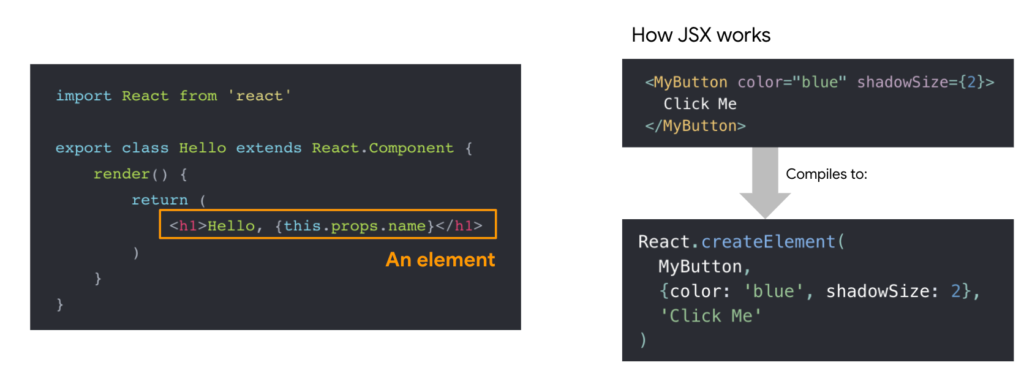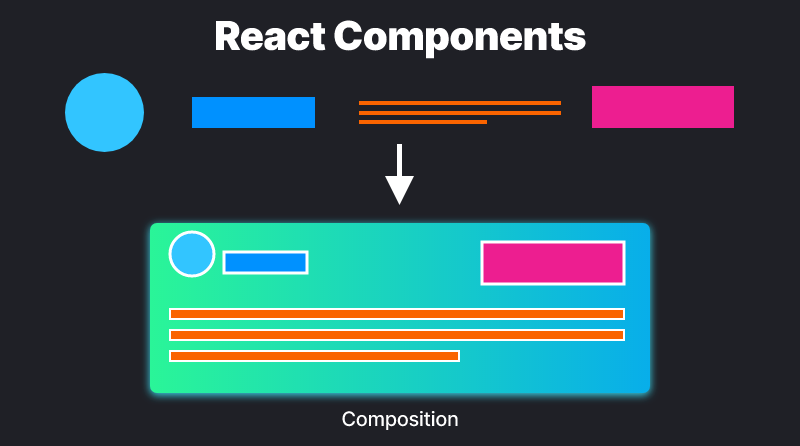The current environment is rich with prospects, as opposed to the early years when a technological barrier stopped businesses from accessing their consumers. React.js and Node.js app development are two popular JavaScript frameworks that offer a great environment for web development nowadays.
The highly competitive technology era goes above and beyond what we could have ever imagined to give them the best experience imaginable. Utilizing the consumer’s favorite device to engage them is one of the newest trends. Mobile applications are therefore currently the main trend.
Since many applications need to be developed in JavaScript, Node.js and React.js are always preferred by developers when creating high-performance applications.
Node.js is the best framework for building server-side apps, and a Node.js development company offers enticing features. When combined with the Node.js framework, JavaScript code functions flawlessly on Windows and Mac OS X. React.js, on the other hand, offers an easy-to-understand API and a straightforward interface design.
Overview: React.js
A JavaScript library called React.js is accessible as an open-source project. You may construct structured interfaces for websites and mobile applications using this front-end framework. Reactjs is well known for its quickness.

Reactjs was developed by Facebook to be used with anything, including content-based websites and mobile applications. React was used in the development of the Facebook and Instagram applications. Additionally, the React.js library helps Netflix improve runtime effectiveness, modularity, and speed.
React.js Features
Simple support
React.js makes use of components from the framework and fixes refresh issues.

Execution –
The application is substantially faster because of React’s use of the Virtual DOM.
Stable Code –
React.js uses descending data streams to guarantee the execution and integrity of your code.
Toolset –
React.js gives programmers quick design tools, guaranteeing enhanced performance.
App Development –
Web application development companies can make complex user interfaces for native Android & iOS apps by employing similar design concepts.
React.js: Pros & Cons
| Pros | Cons |
| You may separate each app’s functionality onto its own virtual DOM using React. Every change made to the DOM is updated on a regular basis. React.js allows you to build quick web applications. The application server can be used to run React, and it will provide the virtual DOM. You can easily construct segments based on your needs. You can design and include components into your primary content with this tool. React.js has a beautiful UI out of the box and updates quickly. | The framework is rather complex, and a thorough understanding is required in order to incorporate it into a user interface. The development of React technologies is fast, and they are frequently updated. Some customers claim that the documentation is challenging to use as a result. The application’s UI layers are the only ones that use the React.js framework. To have a full set of tools, developers will still need to use additional technologies. |
Why Do Developers Prefer React.js for App Development?
Development of Hybrid Applications
Businesses must create cross-platform apps in order to reach a larger audience. Utilizing React.js has a number of outstanding advantages, one of which is its support for hybrid application development.
The management of apps created for iOS and Android using different frameworks is not an easy task for developers. Additionally, because the scripts are written in a variety of languages, maintaining the software is a difficult task. On a single platform, developers may create apps using React.js technology. Additionally, it facilitates standardized user experiences and streamlines development as a whole.
Simple Learning Curve
React.js development has a less steep learning curve than some of its rivals. Here, the developer merely needs a basic understanding of JavaScript. Because everything is simple and obvious, React.js for company development becomes a feasible choice.
There aren’t many characteristics of the React.js technologies that would make them challenging for developers to understand and learn. Developers are therefore more likely to produce high-quality work as a result of their increased tool familiarity. Furthermore, React.js’s short learning curve gives both experts and beginners an equal chance to succeed.
Virtual Document Object Model
A virtual DOM is used by React.js for all of its components. React.js programmers can alter business apps without altering the physical DOM by using virtual DOM. React-DOM is heavily utilized by the React framework to implement the necessary changes.
Virtual DOM can be used to identify risk issues and speed up the rendering of business applications. Testing the risk factors is essential before the enterprise application is finally released.
By examining and assessing the usability of various accessible components, React developers create responsive web applications. Moreover, programmers can make a variety of memory data structures by looking at the different parts.
Rapid Enterprise Growth
Today’s corporate climate is all about efficiency and flexibility. You may gain a crucial competitive edge with expedited website and mobile application development. Businesses also do not want to go over budget or miss deadlines in their pursuit of speed.
The development of corporate applications is greatly aided by the React.js framework in this regard. React.js can help you with both, whether you need to use sophisticated techniques or accelerate a challenging process. Developers can use the framework in a completely customizable manner.
When you hire a React.js developer, they have a wide range of tools at their disposal, which helps them build faster. The claim that React.js defines the fundamental coding for iOS and Android devices is also not overstated.
Adaptable Framework
The versatility of React.js is another of its best qualities. The framework’s main objective has been to make the process of developing applications easier since its inception. Thus, the hybrid design process has achieved noteworthy results regardless of whether React.js is utilized for web development or business development.
The React.js code is really straightforward. As a result, it aids in the adaptability of the corporate application. The organization can develop apps more quickly and affordably because of the framework’s versatility.
In addition to complete freedom, React.js app development makes use of a rich ecosystem of libraries. As a result, developers can select from a wide variety of technologies and architectures for each new development they propose. By using suitable tools, businesses may customize their applications.
Increases the Developer’s Productivity
Another of the many benefits of React.js is its recognition of upcoming technologies. Platform-specific utilities built within the framework lessen the workload associated with making frequent and recurring upgrades.
Developers have complete control over the procedure thanks to React.js’s code reuse feature. Additionally, it calls for an asynchronous data merging process. The flux design is directly subjected to this procedure.
Flow of Data
The one-way data flow of React.js, which is essential for data streamlining, is another factor in developers’ preference for the framework. Using HTML flags, developers may instantly change the value, send data, and other things.
Because React.js may be used for sophisticated business apps as well, it has to contend with a number of perplexing traits. To meet this additional requirement, React.js development integrates callback or rollback capability.
Overview: Node.js
Clients may quickly design web apps using the free, open-source Node.js backend development framework. The node can be used by custom software development services to run JavaScript or network apps. The core modules of it are written in JavaScript. Real-time application servers commonly use it.
Node.js is compatible with a wide range of technologies. One of these frameworks is Express.js. Compared to other Node.js frameworks, it is far more practical and common.
Node.js Features
Versatility:
The non-blocking feature of the server makes Node incredibly adaptable.
No Buffering
Measurements are returned by applications in enormous amounts. This offers the benefit of “No buffering” to developers.
Community –
An open-source project is Node.js. This is the main reason why Node.js apps have added a number of wonderful modules throughout time.
Occasion-based Input and output –
Since Node.js APIs are non-blocking, the server won’t have to wait for data from an API to come in. Instead, it will switch to a different API.
Node.js: Pros & Cons
| Pros | Cons |
| The server will not have to wait for data from an API to arrive as Node.js APIs are non-blocking. It will instead change to a different API. Using Google’s V8 JavaScript technology, Node.js parses JavaScript code. This method’s main benefit is that the JavaScript bytecode is immediately compiled. Node.js is renowned for being extremely extensible. The amount of data exchanged between the web server and client can be specified using JSON. Applications can be grown both horizontally and vertically using Node.js. By extending the current architecture with more hubs, applications may also be scaled. | It can be challenging to work with Node’s Application Programming Interface (API). It never stays the same and is always shifting. JavaScript doesn’t have a strong library system. This limits developers’ use of Node.js for even fundamental programming tasks. Many programmers think it’s more challenging to understand this paradigm than sequential blocking I/O code. Because of the cumbersome nature of asynchronous programming, developers must use nested calls. |
Why Do Developers Prefer Node.js for App Development?
Architecture Based on Microservices

This technique makes it possible to build the software as a set of microservices. When developing an enterprise application, start with an MVP and work your way up to a Microservice architecture, which allows for scalability by combining smaller components.
It is possible to create separate modules that can function independently and offer a tidy user interface. In enterprises, this strengthens the DevOps and Agile mindsets.
The ability to simultaneously work on multiple parts of the program in various languages and from any place gives developers great flexibility. By breaking web applications down into smaller components, Node.js enables the creation of very dependable and scalable microservice-based online applications.
Increased Productivity and Performance
The asynchronous architecture of Node.js allows for the efficient handling of numerous concurrent queries. This improves web apps’ response times noticeably and gets rid of the need for pricey servers.
On the Java programming paradigm, Node.js is based. This makes managing apps—both front end and back end—simpler. This is the basis for the success of Node.js For Enterprise Applications.
No learning curve
The learning curve for Node.js is minimal or almost nonexistent because it is mostly based on JavaScript. Its same syntax makes understanding it simpler.
Developers of both Java and.NET are generally in favor of it. Programmers can use Node.js to learn, create, modify, and deploy scalable apps on Windows and Unix. Additionally, it makes it possible for novice developers to easily grasp and use Node.js for developing web apps.
Maintaining and Updating the Codebase on a Regular Basis
People now engage with the web and business software very differently. These dynamic requirements force businesses to adjust to changing needs.
Designing the user interface and user experience has become essential to business software. There have been substantial changes to how data is gathered, shown, and represented in apps.
Package Controller for all Project Components in One Place
The industry standard for Node.js developers is the Node Package Manager (NPM). It has been acknowledged as being a key element in Node.js’ success because it has the most accessible modules.
There are numerous third-party packages and frameworks available for Node.js that may be accessible through NPM. This lessens reliance and increases the Node’s utility.
Utilizing pre-existing software modules is made possible by NPM, saving you the time and effort needed to create common features and capabilities from scratch.
Cross-functional Development Teams
Due to the fact that Node.js is built on JS, there is no requirement to hire backend and frontend engineers. Professional Node engineers are also capable of working with Angular and React.
Node.js increases developer efficiency across the board, enabling companies to build a workforce that is more capable and adept at overcoming obstacles. Full-stack coders are the wave of the future!
Reasons To Use Node.js and React.js Together
Real-time Information:
If the application’s main functionality depends on real-time information handling or broadcasting, using Node.js for a permanent server connection is highly advised.
Heavy Server Traffic:
React.js and Node.js working together can help manage requests and balance server load.
JSON APIs:
Using Node.js, developers may quickly create JSON APIs for use in developing your website. The reusability of the code makes it easier for React.js users to collaborate.
Simple UI Applications:
React.js and Node.js are the finest frameworks for building single-page applications and solutions because they enable a robust backend, a lightweight user interface, and concurrent data streaming via callback methods.
Top Companies Using Node.js and React.js For Application Development
A site for networking among professionals is called LinkedIn. It is regarded as the best option for people who want to be recognized by pertinent businesses and who are looking for significant career progression. LinkedIn switched from Ruby on Rails to Node.js in late 2011. The engineers at LinkedIn primarily wanted to enhance their mobile application, which is now entirely built in Node.js, so they did this.
The application is now 20 times faster than earlier versions because of the huge server resource reduction they were able to achieve.
Netflix
Among the companies that use Node.js, Netflix is the most well-known. It is a video streaming company with millions of members worldwide.
Node.js was used to develop Netflix’s user interface (UI). The Netflix development team claimed that React.js’ adaptability was what ultimately led them to adopt it. As a result, Netflix may be set up almost twice as quickly.
Trello
Organizations utilize the online collaboration tool Trello to categorize work and ideas using virtual boards. Node.js is used to create the server-side code for Trello. Trello and its users require prompt updates, and Node.js enables numerous concurrently active connections.
The Trello team also appreciates React.js’s robust frameworks and flexibility to create single-page applications.
PayPal
In fact, the most well-known digital payment processing platform is PayPal. PayPal makes use of Node.js to offer a user-friendly interface.
The React.js framework’s ability to help programmers create both server-side and client-side JavaScript apps is valued by the PayPal development team. Streamlining the workflow, it aids in the development of the project.
Walmart
The large American retailer Walmart operates grocery stores and department stores all over the world. The Node.js app development framework is used by Walmart for both its user interfaces and as an administrative layer for creating APIs that support the company’s multiple applications.
Groupon
Another e-commerce platform, Groupon works with other businesses to provide special offers and discounts. Like LinkedIn, Groupon switched from Ruby on Rails to Node.js and React.js in 2015. The framework was utilized by the software developers at Groupon to transport both its mobile and online traffic.
Their main motivation for switching was to improve scalability; as a result, resource consumption for busy websites was reduced, and page loads were sped up.
Conclusion
A Node.js and React.js combination is recommended for businesses that want to create their own high-performance apps. They may use pre-loaded open source tools thanks to this combination, which also thrills them with its effectiveness, cost, and unrivaled support from the relevant communities.



